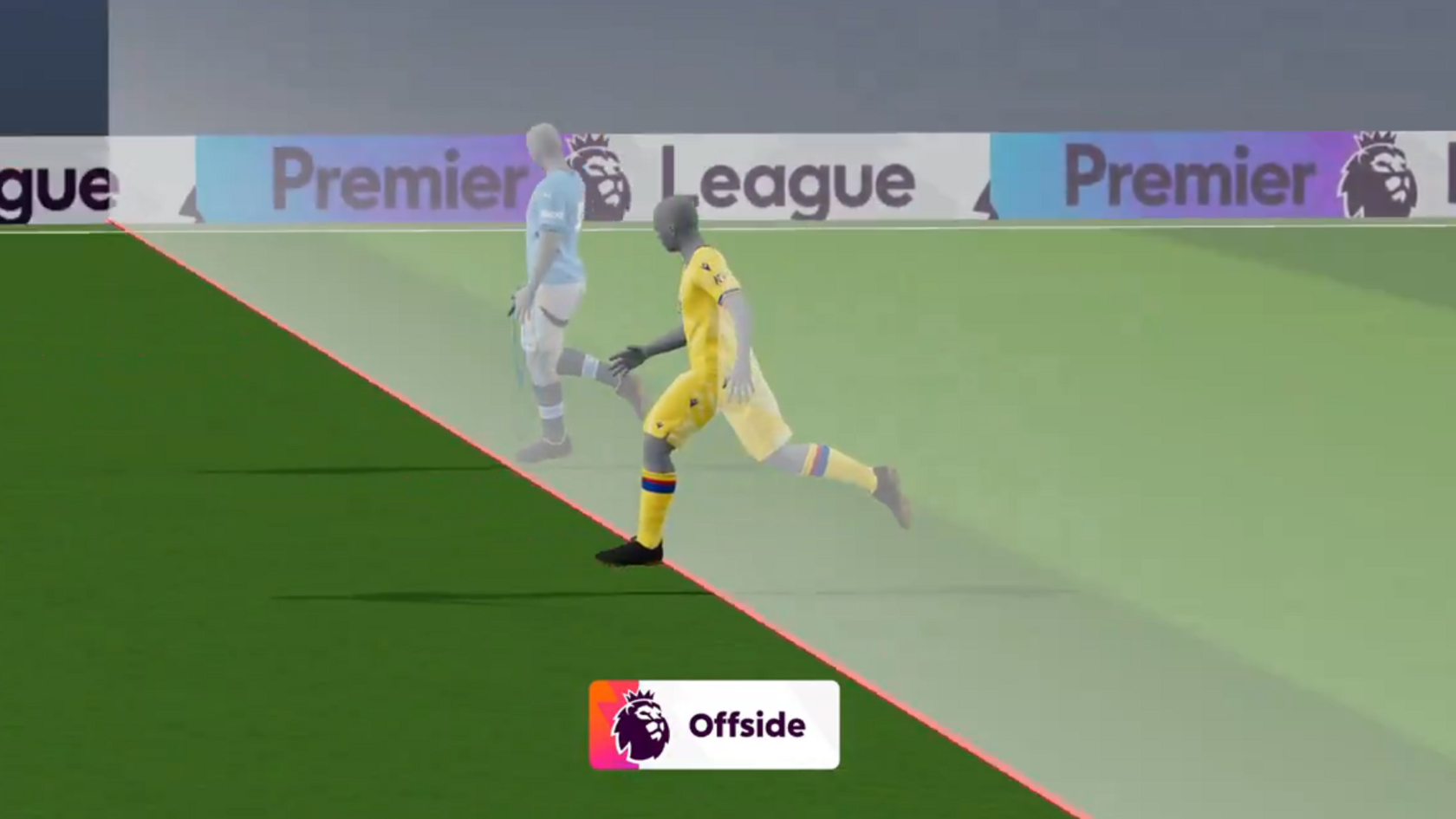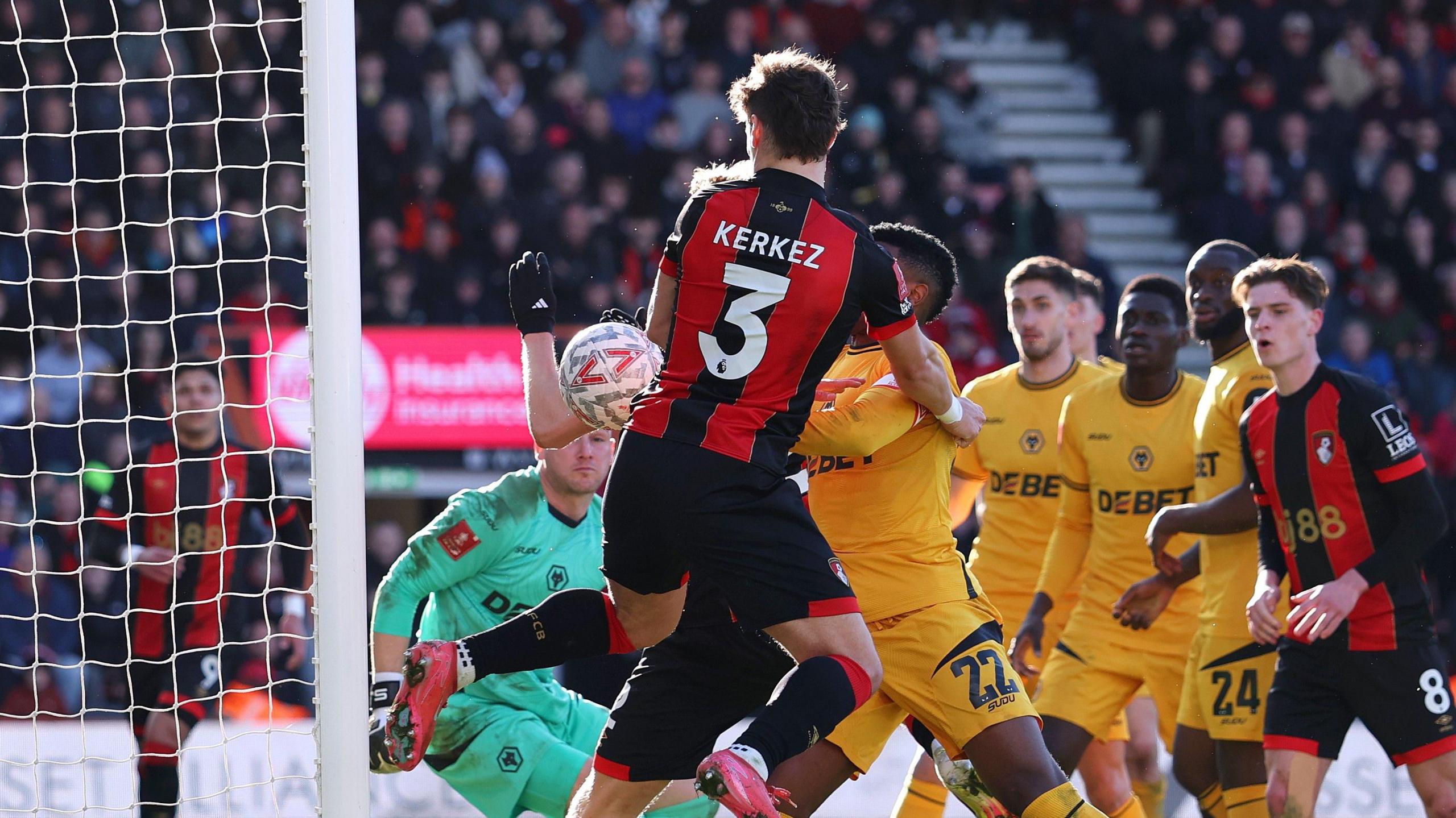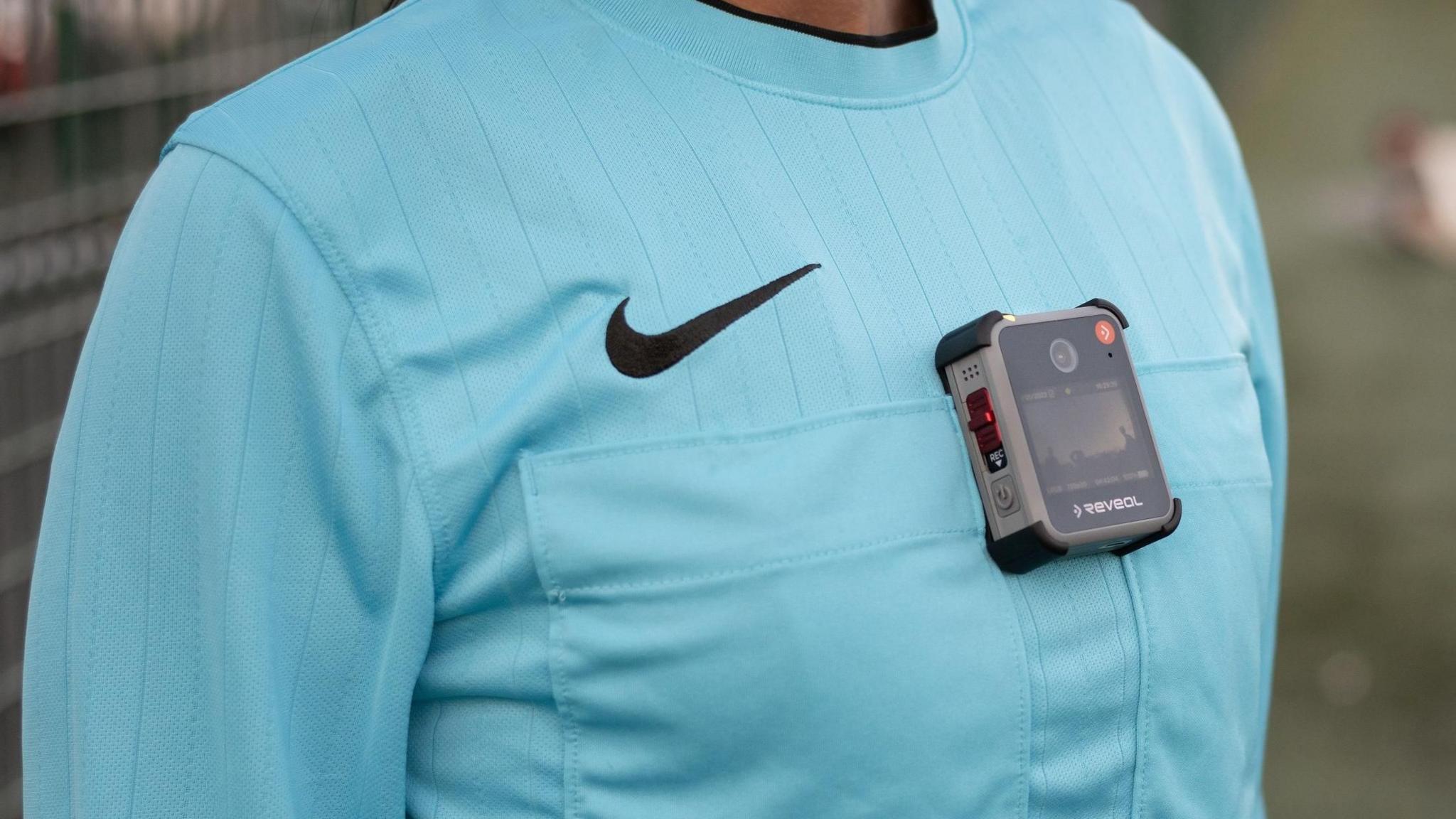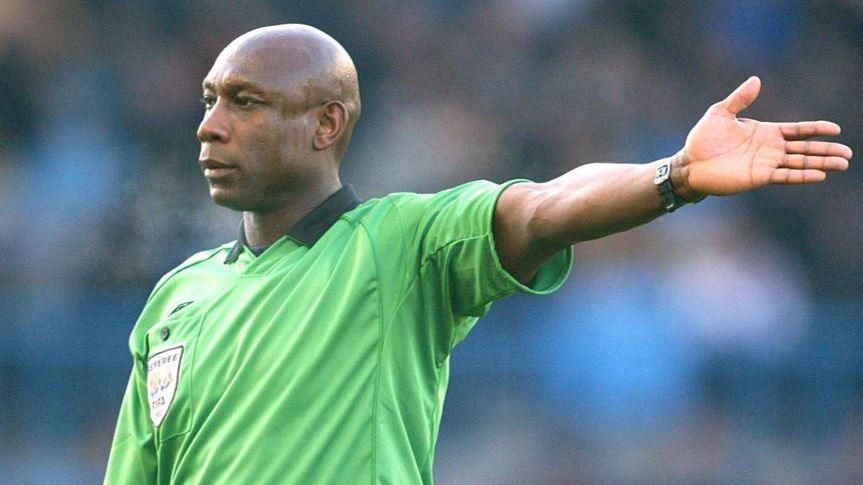Explainer: Semi-automated offsides start in Premier League
How will semi-automated offsides work in the Premier League?
- Published
After trials, delays, praise and some criticism, semi-automated offside technology is being introduced in the Premier League this weekend.
With several high-profile lengthy video assistant referee (VAR) decisions in recent weeks, it is hoped the technology will start to reduce the delays and some debates.
Clubs voted in the technology last April, but its rollout was pushed back from the autumn for more trials.
SAOT helped rule out two goals in the top flight on Saturday, one in Manchester City's victory over Crystal Palace and another in Arsenal's draw with Brentford.
At Etihad Stadium, Eberechi Eze's clinical finish would have put Palace 3-0 up on the half-hour mark, but the 26-year-old was ruled offside from Daniel Munoz's pass.
And in Saturday's late game, Kieran Tierney thought he had headed Arsenal in front in the first half against Brentford but was adjudged to have strayed beyond the last defender from Ethan Nwaneri's cross.
The technology is designed to make the judgement of tight offside calls easier for officials by making key parts of the review process automatic.
The Premier League says the artificial intelligence system "enhances the speed, efficiency and consistency of offside decision-making".
It is not used for other VAR involvements such as penalties, goal reviews for handballs or other fouls, red cards or mistaken identity.

Crystal Palace's Eberechi Eze had strayed offside in the build-up to his disallowed first-half effort at Manchester City
So how does it work?
First things first, the name. Why semi-automated? Don't be confused - it just means humans have to verify the system's decision.
We have already seen SAOT in this season's Champions League and in the FA Cup from the fifth round onwards.
When a tight offside decision goes to a VAR review, SAOT steps in.
Previously, officials in the VAR room needed to decide on three key things - when the ball was kicked, where and at what angle the defender's body was when the ball was kicked and where and what angle the attacker's body was at the moment of contact.
Viewers at home have seen this manual process played out with lines drawn with crosshairs on freeze-frame replays shown on their TV screens.
All three of those decisions are now being automatically taken by the technology to remove some elements of human subjectivity, such as which frame to freeze as the ball is kicked.
Bespoke cameras have been installed beneath the roof at all 20 Premier League stadiums to monitor a variety of key elements.
About 30 cameras - working at 100 frames per second - track the exact movement of the ball as well as 10,000 data points on the bodies of all 22 players.
It means it can be automatically determined whether an attacking player's body was beyond the last defender at the exact time the ball was played.
VAR officials check the system has correctly determined the three key points it measures before confirming the decision. The on-field officials then inform the players.
A 3D animation of the decision produced by the artificial intelligence is then played on television for viewers at home and on big screens in the stadium.
As yet, the officials have not spoken to the crowd, as has been seen in the Carabao Cup.
Will it end the lengthy delays?
Six minutes to come to a clear & obvious decision - Ange on VAR 'lottery'
In short, a little.
But it's important to remember we are only talking about offside decisions here - which are largely factual - and not subjective refereeing calls on goals, penalties and red cards, which will still go to VAR.
SAOT will increase the speed of the virtual offside line placements and it will help in crowded penalty areas.
The delay in disallowing Moises Caicedo's goal in Chelsea's 1-0 win over Tottenham was about four minutes, and there is confidence SAOT would have cut that wait by about two minutes.
But it would not have reduced the time - more than three minutes - that it took to disallow Pape Sarr's goal in the same game which led to Spurs boss Ange Postecoglou claiming that VAR was "killing the game". That goal was ruled out for a foul that was spotted in midfield, rather than for an offside.
The Premier League says there has already been 100% accuracy with offsides this season, with the average VAR delay at 39 seconds per game, compared with 64 seconds last season.
Ultimately, SAOT will reduce, but not eliminate, VAR delays for complex situations.
What was learned from eight-minute delay at Bournemouth?

Milos Kerkez's goal was eventually disallowed after a record VAR delay
In Bournemouth's FA Cup fifth-round win over Wolves - one of the 'trial' games - SAOT made the headlines after a record eight-minute VAR stoppage.
The officials were unable to rely on the new technology during the check, and they needed to revert to manually drawn lines before disallowing Bournemouth defender Milos Kerkez's 35th-minute goal.
The Football Association (FA) said the issue was caused by a congested penalty area.
It was reviewed and it was recognised the speed of the process and switching between technologies - AI and data platform Genius Sports supply the SAOT - could have been improved.
It was felt some time could have been saved before recognising the new technology was not going to be able to help in that situation.
There are no plans for a time cut-off for VAR checks, despite recent criticism.
The argument from referees' body PGMOL is that it can sometimes take time for officials to check through multiple issues with multiple processes - the last of which may be decisive but fall out of any time limit, should one be imposed.
Related topics
- Published1 March

- Published8 April

- Attribution
- Published3 April

- Published7 April
